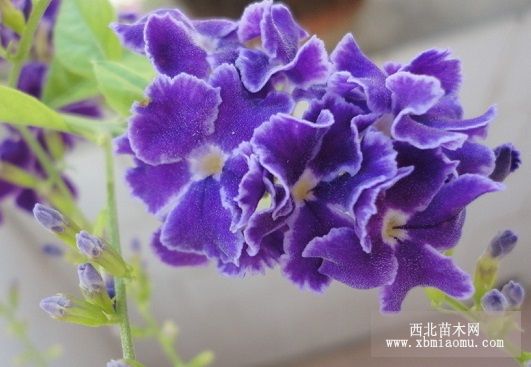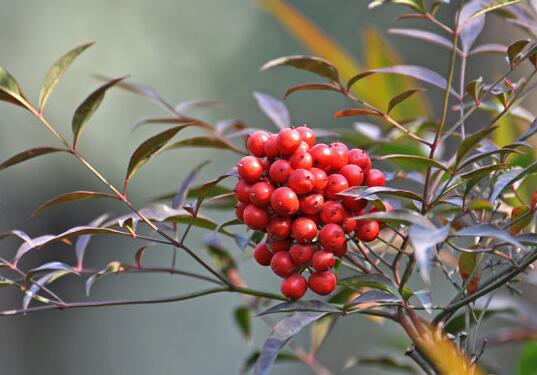Control of Violet bacterial Rot
Symptoms: The disease occurs in seedlings and adult plants. Seedling disease, the main stem of the disease was water-stained dark green soft rot, and later turned dark brown. The disease occurs in adult stage, and the disease spots appear on the stem near the ground. The disease spots are irregular or surround the stem, dark brown, slightly sunken and dehiscent, resulting in plant death and pus in the diseased part.
Pathogen: Xanthomonas campestrts pv. in canae (Kendrick et baker) dye.
Pathogen overwintering in diseased bodies and seeds and spreading with seeds.
Prevention and treatment: ① seed treatment before sowing. Soak seeds in warm water at 54 ° C for 10 minutes, then cool quickly to dry. 2. Soil disinfection. 3. Remove diseased plants immediately when they are found.④ During the onset period, streptomycin can be sprayed to prevent and control.

Originated on the Mediterranean coast. Widely cultivated in southern China, it is one of the famous flowers in Europe. Species are common in large cities in China and can be grown in gardens or greenhouses for viewing. This flower is similar to pansy and is easily confused. Control of bacterial rot of violets
Symptoms: The disease occurs in seedlings and adults. Seedling disease, the main stem of the disease was water-stained dark green soft rot, and later turned dark brown. The disease occurs in adult stage, and the disease spots appear on the stem near the ground. The disease spots are irregular or surround the stem, dark brown, slightly sunken and dehiscent, resulting in plant death and pus in the diseased part. Pathogen: Xanthomonas campestre sp V.in-canae(Kendricket Baker)Dye. Pathogen overwintering in diseased bodies and seeds and spreading with seeds. Control: ① seed treatment before sowing. The seeds are soaked in warm water at 54℃ for 10min and then cooled quickly to dry. 2. Soil disinfection. 3. Remove diseased plants immediately if they are found.④ During the onset period, streptomycin can be sprayed for prevention and control. Control of bacterial rot of violets
Purple is a romantic color, but dark purple gives people a sense of mystery. Violet flower language: eternal beauty and love, simplicity, virtue, summer cool. At the same time, violets are Taurus lucky flowers, violets have garden value and health value.
Symptoms: The disease occurs in seedlings and adults. Seedling disease, infected with the disease on the main stem was water-like dark green soft rot, later turned dark brown. The disease occurs in adult stage, and the disease spots appear on the stem near the ground. The disease spots are irregular or surround the stem, dark brown, slightly sunken and dehiscent, resulting in plant death and pus in the diseased part.
Pathogen: Xanthomonas campestrts pv. in canae (Kendrick et baker) dye.
Pathogen overwintering in diseased bodies and seeds and spreading with seeds.
Prevention:
1. Seed treatment before sowing. Soak seeds in warm water at 54 degrees Celsius for 10 minutes, then cool quickly to dry.
2. Soil disinfection.
3. Remove diseased plants immediately when they are found.
④ During the onset period, streptomycin can be sprayed to prevent and control.
- Prev

How to prevent and cure carnation Fusarium wilt?
Fusarium wilt is caused by a bacterial infection. The top of the diseased plant or a few branches withered, the whole plant of a few diseased plants suddenly withered, the diseased branches dried and turned grayish green, and later became yellowish brown to dark brown. After the seedlings were infected, the leaves twisted to one side and the roots became soft rot and brown. Observe under a microscope
- Next

Is Phyllostachys pubescens poisonous? can Phyllostachys pubescens be cultured indoors / poisonous but can be raised indoors
Phyllostachys pubescens is a kind of highly ornamental plant, and its plant shape is beautiful, so it is loved by many people. Many people want to raise this kind of plant at home, but many plants are toxic to a certain extent. Before breeding, this should be made clear. So is Phyllostachys pubescens toxic? Can Phyllostachys pubescens be cultured indoors
Related
- Fuxing push coffee new agricultural production and marketing class: lack of small-scale processing plants
- Jujube rice field leisure farm deep ploughing Yilan for five years to create a space for organic food and play
- Nongyu Farm-A trial of organic papaya for brave women with advanced technology
- Four points for attention in the prevention and control of diseases and insect pests of edible fungi
- How to add nutrient solution to Edible Fungi
- Is there any good way to control edible fungus mites?
- Open Inoculation Technology of Edible Fungi
- Is there any clever way to use fertilizer for edible fungus in winter?
- What agents are used to kill the pathogens of edible fungi in the mushroom shed?
- Rapid drying of Edible Fungi

